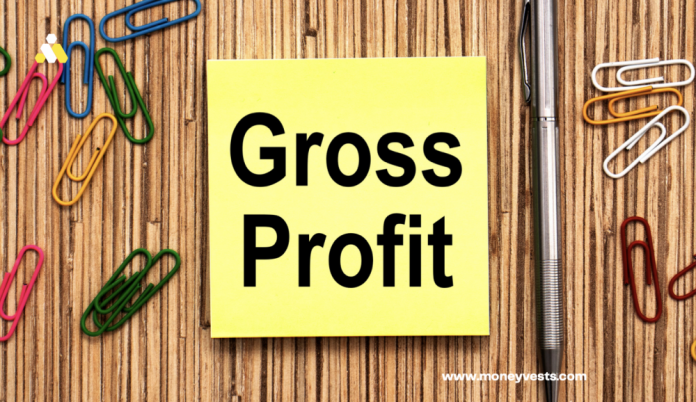How Gross Profit is Calculated?

Knowing how to calculate gross profit will help you identify areas of your business that are most profitable. Gross profit margin is the amount of money left over after you’ve deducted operating expenses from your revenues.
These expenses include materials and labour costs. To calculate gross profit, subtract the cost of goods sold from total revenues.
After calculating your operating expenses, multiply the amount of money left over by the cost of goods sold. The difference is your gross profit.
Cost of goods sold
In the calculation of gross profit, cost of goods sold (COGS) must be included. The COGS includes all of the expenses involved in producing and selling the products.
This figure does not include overhead costs or indirect costs that are not directly related to the sold products. This figure represents the real cost of producing the merchandise. Listed below are the components of COGS. To understand how cost of goods sold impacts gross profit, consider how the costs are determined.
The cost of goods sold is an important number for a company. It is an important metric for production management and for calculating tax write-offs.
In addition to direct labor, the cost of raw materials and supplies used in manufacturing is included.
Additionally, the cost of the shipping container and freight is included. Cost of goods sold is a vital factor in determining a company’s profit. In addition to the cost of the goods themselves, companies also need to consider other costs, such as overhead and sales and marketing.
Regardless of your company’s type of business, you must know how your COGS is calculated. Using the first in, first-out (FIFO) method will result in the lowest cost per unit.
However, if your company uses the last-in, first-out (LIFO) method, it can have significant tax benefits. It is also advantageous for businesses that maintain a large inventory of products. However, if your inventory costs are consistently increasing, you’ll probably end up paying a higher tax bill than if you used the FIFO method.
Net profit minus taxes
How net profit minus taxes is calculated? The net profit of an organization is the amount left after paying all expenses. It is a useful metric for evaluating the efficiency of an organization’s operations and its potential for future growth.
The term net profit after tax is often used in conjunction with other economic value-added measures, such as the company’s cash flow. This article will provide an explanation of net profit after tax, provide an example calculation, and discuss other ways to use this number.
To calculate the amount left over after a company pays its expenses, subtract the cost of goods sold (COGS) from its total revenue.
This number is called operating income. Operating income is the difference between net profit and gross profit. In a product-based company, COGS, or cost of goods sold, includes all costs that go into the production or delivery of a product.
For this calculation, the total revenue is deducted from the cost of raw materials, manufacturing or warehouse labor, inbound shipping, and production equipment.
Profit before tax is the amount of earnings that remain after all expenses are paid. The taxable component of profit is subtracted from the available profit before tax.
The taxable component is not required when the profit before tax is negative.
Nevertheless, if profits are higher than expenses, the tax component must be lower than the profits.
Only profitable businesses must pay taxes, but some companies will not pay any tax. It’s therefore important to understand how to calculate net profit before tax.
Other factors that go into calculating gross profit
A business’ gross profit is the difference between its revenue and its costs of producing goods and services. Gross profit is the income that remains after all expenses are paid for production of goods and services are deducted from the total revenue.
A business that earns more in sales than it spends on production will have a higher gross profit than one that loses money.
A business’ gross profit can be negative, so it is essential to make changes to increase its revenues and reduce its fixed cost of goods sold. However, there are some cases where both options are needed.
Another important factor to consider is how a business’ gross profit relates to its overall profitability. Although gross profit percentage is an important metric for determining overall profitability, it does not account for all expenses.
Sales volume and costs that are not included in the calculation are not considered. Thus, a company with a high percentage point may still have a low net profit because sales volume is low and it cannot cover all the expenses not included in the gross profit formula.
In the same way, a business with a low percent point might also have a high gross profit percentage if it suddenly gets very popular and its sales skyrockets.
Raw materials and labor are important components of a company’s COGS.
These costs are attributed to external factors, such as geological disasters, political unrest, and weather conditions. These external factors can affect the raw materials price, which is a big factor in gross profit calculation.
If prices of raw materials go up, the company’s gross profit may fall. However, if sales volume is stable, the company will still have a positive margin.
Did you enjoy reading this article? If so, check out more today!
Fact Check
We strive to provide the latest valuable information for our readers with accuracy and fairness. If you would like to add to this post or advertise with us, don’t hesitate to contact us. If you see something that doesn’t look right, contact us!





